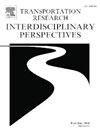评估固定测速摄像头对超速行为和撞车的影响:纽约市的一项纵向研究
IF 3.9
Q2 TRANSPORTATION
Transportation Research Interdisciplinary Perspectives
Pub Date : 2025-03-01
DOI:10.1016/j.trip.2025.101373
引用次数: 0
摘要
超速是造成致命车祸的主要原因。这项纵向研究调查了与2019年至2021年纽约市自动速度执法计划扩展相关的短期和长期变化,包括covid -19导致的超速行为激增以及大量行人和非机动车辆的复杂性。利用1821个固定测速摄像头的超速罚单和碰撞数据,本研究采用中断时间序列、空间分布、聚类分析和随机效应生存分析(SARE)来调查这样的计划是否会在超速行为和碰撞减少方面带来即时和/或长期的变化。研究结果表明,在安装后的第二个月、第三个月和第四个月,超速罚单平均减少了18.4%、13.3%和0.6%,这表明该项目在减少超速行为方面具有短期效果。然而,在一些摄像机位置观察到衰减和滞后效应,表明需要进一步调查并在这些地点采取潜在的替代安全干预措施。长期分析显示,到2021年底,超速罚单数量大幅减少75%,尽管在大流行期间出现了短暂的激增。确定了四种不同的长期模式。此外,事故分析显示,在实施测速摄像头后,交通事故(在covid之前)在统计上显著减少了14%。总体而言,该项目在减少超速违章和交通事故方面取得了很大成功,但其时间效果因地点而异。需要持续监测、数据导向的自适应策略和额外的安全对策来优化项目的影响。本文章由计算机程序翻译,如有差异,请以英文原文为准。
Assessing the impact of fixed speed cameras on speeding behavior and crashes: A longitudinal study in New York City
Speeding is a leading contributor to fatal crashes. This longitudinal study examines the short- and long-term changes associated with an automated speed enforcement program’s expansion from 2019 to 2021 in New York City, including the COVID-19-induced surge on speeding behaviors and the complex nature of high volumes of pedestrians and non-motorized vehicles. Leveraging speeding tickets from 1,821 fixed speed cameras in school zones and crash data, this study employs interrupted time-series, spatial distribution, clustering analysis, and Survival Analysis with a random effect (SARE) to investigate if such a program brings about immediate and/or long-term change in speeding behaviors and crash reduction. The findings suggest a decrease in speeding tickets by an average of 18.4 %, 13.3 %, and 0.6 % in the second-, third- and fourth-month post-installation, demonstrating the program’s short-term efficacy in reducing speeding behavior. However, diminishing and time-lag effects were observed at some camera locations, indicating the need for further investigation and potential alternative safety interventions at these sites. Long-term analysis revealed a substantial 75 % reduction in speeding tickets by the end of 2021, despite a temporary surge during the pandemic. Four different long-term patterns were identified. Furthermore, crash analysis showed a statistically significant 14 % decrease in traffic crashes (pre-COVID) following speed camera implementation. Overall, the program has been largely successful in reducing speeding violations and traffic crashes, but its temporal effect varies across sites. Continuous monitoring, data-led adaptive strategies, and additional safety countermeasures are needed to optimize the program’s impact.
求助全文
通过发布文献求助,成功后即可免费获取论文全文。
去求助
来源期刊

Transportation Research Interdisciplinary Perspectives
Engineering-Automotive Engineering
CiteScore
12.90
自引率
0.00%
发文量
185
审稿时长
22 weeks
 求助内容:
求助内容: 应助结果提醒方式:
应助结果提醒方式:


